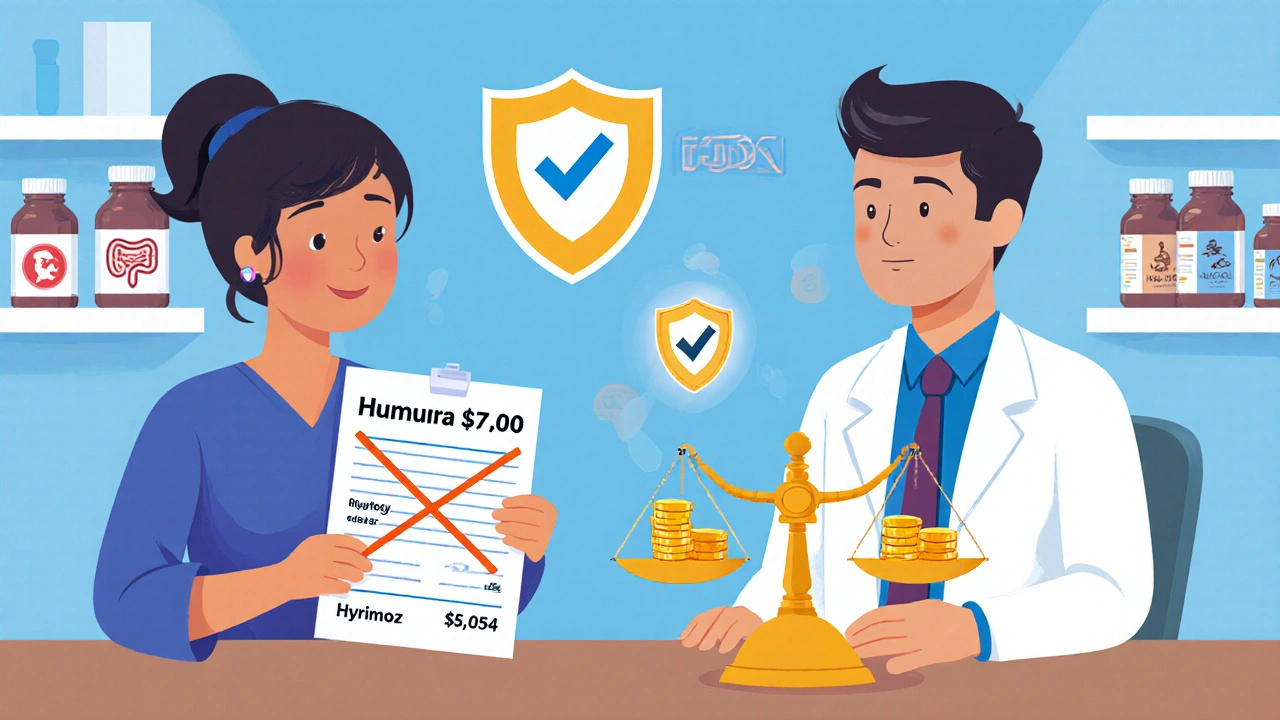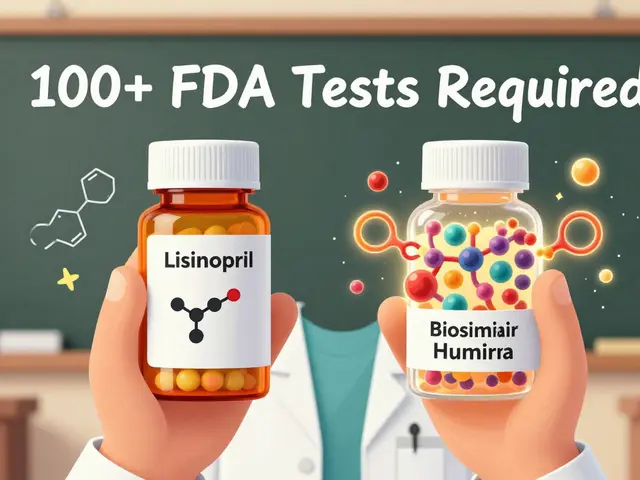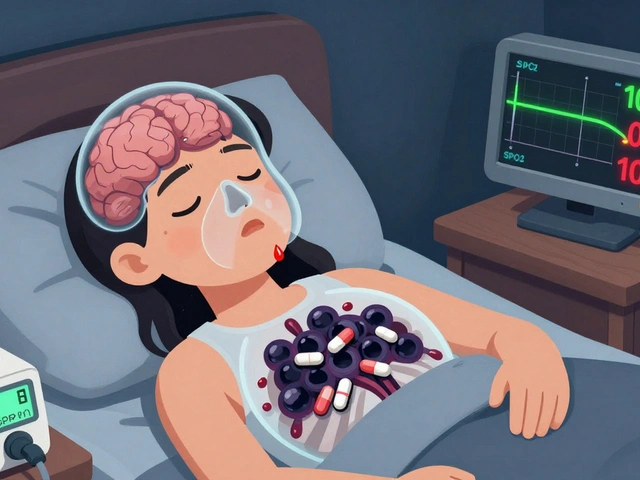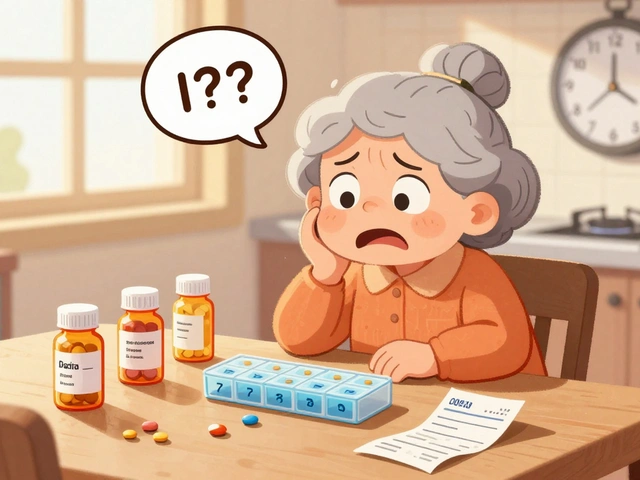How to Understand Biosimilars and Their Cost Implications

Biologic drugs have changed how we treat cancer, rheumatoid arthritis, and Crohn’s disease. But they come with a price tag that can hit $7,000 a month. That’s not just expensive-it’s unaffordable for many. Enter biosimilars: drugs that work just like the original biologics but cost significantly less. If you’ve been told you’re eligible for a biosimilar, or you’re wondering why your doctor mentioned it, here’s what you actually need to know-no jargon, no fluff.
What Exactly Is a Biosimilar?
A biosimilar isn’t a generic drug. That’s the first thing to understand. Generics are exact chemical copies of pills like ibuprofen or metformin. Biosimilars are copies of complex medicines made from living cells-yeast, bacteria, or animal cells. Think of it like trying to recreate a handmade sweater. Even with the same yarn and pattern, no two are perfectly identical. But if they keep you warm the same way, look the same, and last just as long, they’re functionally the same.
The U.S. Food and Drug Administration (FDA) requires biosimilars to show they’re highly similar to the original biologic in structure, function, safety, and effectiveness. There can’t be any clinically meaningful differences. That means: same mechanism of action, same dosage, same route of administration, same side effects. The FDA approved the first biosimilar, Zarxio, in 2015. Since then, they’ve approved 45 of them as of October 2023.
How Are Biosimilars Different from the Original Biologics?
The original biologic-say, Humira or Enbrel-is called the “reference product.” Biosimilars are made after the patent expires. But because they’re made from living organisms, manufacturers can’t replicate them exactly. Small differences in how the cells are grown or processed can happen. That’s why the FDA doesn’t just look at one test. They demand a full picture: thousands of lab tests, animal studies, and clinical trials comparing the biosimilar to the original.
Here’s the key: those tiny differences don’t make the drug less safe or less effective. Studies like the NOR-SWITCH trial, published in The Lancet, followed over 500 patients switching from reference biologics to biosimilars. No increase in immune reactions, no drop in effectiveness. The European Medicines Agency has tracked biosimilars for over 16 years with no new safety signals. The FDA states clearly: “Biosimilars are as safe and effective as their reference products.”
How Much Do Biosimilars Actually Save?
They don’t cut costs in half like generics do. Generics often save 80-85%. Biosimilars start at 15-30% off. That might not sound like much-until you multiply it by millions of doses.
Take Humira. Before biosimilars hit the U.S. market in 2023, it cost about $7,000 a month. The first interchangeable biosimilar, Hyrimoz, launched at $5,054-nearly 28% cheaper. Other Humira biosimilars followed, some even lower. In the first 18 months after launch, biosimilars captured 72% of new infliximab (Remicade) prescriptions. That’s a huge shift.
But here’s the catch: list price isn’t what you pay. Insurance, rebates, and pharmacy benefit managers play a role. Still, patient surveys from the Arthritis Foundation show 72% of biosimilar users reported lower out-of-pocket costs. For many, that means switching from skipping doses to taking them regularly.
The RAND Corporation estimated biosimilars could save the U.S. healthcare system $54 billion between 2017 and 2026. The Congressional Budget Office now projects savings could hit $150 billion annually by 2030-if market barriers are cleared. Right now, patent lawsuits and “product hopping” (when drugmakers tweak the original just before biosimilars arrive) slow things down. That’s why adoption is faster in Europe, where pricing rules are tighter.

Can You Just Swap Your Biologic for a Biosimilar?
Not always. In most states, your doctor has to approve the switch. Only six biosimilars have been labeled “interchangeable” by the FDA as of November 2023. That means pharmacists can substitute them without asking your doctor-just like generics. But even then, many insurers require prior authorization.
Patients often worry: “Will it work the same?” A 2022 survey of 1,200 people using biosimilars found 87% reported no difference in effectiveness. But 28% had initial fears. That’s where education matters. Rheumatologists report spending 10-15 minutes per patient explaining the science. Reddit threads in r/rheumatology show patients are more comfortable after hearing real data-not marketing.
One thing to watch: switching back and forth multiple times between a reference product and biosimilars. Some experts, like Dr. Almut Winterstein, say we need more data on long-term switching. But single switches? The evidence is solid.
Why Aren’t Biosimilars Used More?
It’s not about safety. It’s about money and bureaucracy.
Drugmakers of the original biologics spend millions fighting biosimilar entry-filing patents, negotiating rebates with insurers, and lobbying to keep their market share. In the U.S., only 28% of new etanercept (Enbrel) prescriptions went to biosimilars, compared to 72% for infliximab. Why? Enbrel’s maker extended its patent protection through minor changes, delaying competition.
Doctors also face a learning curve. A 2022 survey of oncologists found 78% needed 1-2 hours of training to feel confident prescribing biosimilars. The biggest hurdle? Navigating insurance rules. One doctor told me: “I can prescribe it, but if the patient’s plan won’t cover it without a 3-month prior auth, what’s the point?”
Meanwhile, in Europe, biosimilars took over 84% of the filgrastim market within three years. Why? Simpler pricing, no patent games, and government push for cost savings.
What’s Next for Biosimilars?
The next wave is coming. Biosimilars for Stelara (ustekinumab), a top-selling drug for psoriasis and Crohn’s, are pending FDA review. Seven applications are in the pipeline. Once approved, prices could drop by 40% or more.
The Inflation Reduction Act of 2022 is helping. Starting in 2024, Medicare Part D patients will pay only 25% of the cost for biosimilars-down from higher tiers. That’s a big incentive for older adults on chronic treatments.
And then there’s “biobetters”-next-gen versions of biologics with slight improvements, like longer-lasting effects. These aren’t biosimilars, but they’ll compete with them. The market is shifting fast.
By 2027, experts predict biosimilar use will jump from 25-30% to 50-60% of eligible prescriptions. That’s not just a cost win-it’s a access win. Thousands of patients who couldn’t afford biologics will finally get treatment.
Where to Find Reliable Info
Don’t trust drug company ads alone. They focus on savings but rarely explain the science. Use these trusted sources:
- FDA Purple Book: The official list of all approved biosimilars and their reference products. Updated monthly.
- Biosimilars Council: Free toolkits by disease-rheumatology, oncology, diabetes.
- Arthritis Foundation: Patient stories and FAQs written in plain language.
- European Medicines Agency (EMA): Long-term safety data from 16+ years of use.
If you’re considering a switch, ask your doctor: “Is there a biosimilar for my drug? Has it been proven safe for my condition? Will my insurance cover it?” Don’t assume it’s automatic. But do know this: the science is there. The savings are real. And for many, it’s the difference between treatment and no treatment.
Are biosimilars safe?
Yes. The FDA requires biosimilars to prove they’re as safe and effective as the original biologic through thousands of lab tests, animal studies, and clinical trials. Over 16 years of use in Europe and nearly a decade in the U.S. have shown no unexpected safety issues. Studies like the NOR-SWITCH trial found no increase in immune reactions or loss of effectiveness when patients switched.
How much cheaper are biosimilars than biologics?
Biosimilars typically cost 15-30% less than the original biologic at list price. For example, Humira’s list price was $7,000/month; its biosimilar Hyrimoz launched at $5,054-a 28% drop. Actual patient savings vary based on insurance, but surveys show 72% of users report lower out-of-pocket costs. Over time, as more biosimilars enter the market, prices can drop further.
Can my pharmacist switch me to a biosimilar without my doctor’s approval?
Only if the biosimilar is labeled “interchangeable” by the FDA and your state allows pharmacist substitution. As of November 2023, only six biosimilars have that designation. In 48 states, laws require the prescribing doctor to approve the switch. Even with interchangeable biosimilars, many insurers still require prior authorization.
Why aren’t biosimilars used more in the U.S.?
Patent litigation, “product hopping” (when drugmakers make minor changes to delay competition), and complex insurance rules slow adoption. Drugmakers spend millions to protect their market share. In Europe, where pricing is regulated and patent rules are tighter, biosimilars captured 84% of the filgrastim market within three years. In the U.S., adoption varies by drug-72% for infliximab, but only 28% for etanercept.
Will switching to a biosimilar affect how well my treatment works?
No, for single switches. Large studies and real-world data show biosimilars work just as well as the original biologic. A survey of 1,200 patients found 87% reported no difference in effectiveness. Concerns about reduced efficacy are common but usually stem from lack of information, not science. If you’re worried, talk to your doctor-many spend 10-15 minutes explaining the evidence to patients.
Is there a risk of more side effects with biosimilars?
No increased risk has been found. The FDA requires biosimilars to undergo rigorous testing for immunogenicity-the body’s immune response to the drug. Studies, including those from the EMA and FDA, show biosimilars have the same rate of side effects as the reference product. Long-term surveillance in Europe has tracked over 16 years with no new safety concerns.
What’s the difference between a biosimilar and a biobetter?
A biosimilar is designed to be as close as possible to an existing biologic. A biobetter is a new version with intentional improvements-like longer-lasting effects, fewer injections, or reduced side effects. Biobetters aren’t copies; they’re upgraded versions. They compete with both the original biologic and biosimilars, but they’re not approved under the same pathway and are usually more expensive.
Will biosimilars be available for more drugs soon?
Yes. Seven biosimilar applications for Stelara (ustekinumab) are pending FDA review as of September 2023. Other high-cost biologics like Enbrel, Rituxan, and Herceptin are also entering the biosimilar pipeline. With major patents expiring through 2027, analysts predict biosimilar use will rise from 25-30% to 50-60% of eligible prescriptions by 2027, potentially saving the U.S. healthcare system $150 billion annually by 2030.
What You Can Do Now
If you’re on a biologic, ask your doctor: “Is there a biosimilar for my drug?” Check your insurance plan’s formulary. Look up your drug on the FDA’s Purple Book. If you’re eligible and your provider supports it, switching could mean less financial stress and better adherence. You don’t have to choose between affordability and effectiveness. The science says you can have both.
16 Comments
Koltin Hammer
Man, I remember when I first heard about biosimilars. Thought they were some kind of sci-fi knockoff, like a fake lightsaber you buy at a gas station. But then I dug into the FDA data, read the NOR-SWITCH trial, and realized-holy crap-it’s not magic, it’s science. Same mechanism, same dosing, same side effects. It’s like getting a handmade sweater from a different artisan who uses the same wool, same pattern, same hands. It’s not identical, but it keeps you just as warm. And when you’re paying $7k a month for that sweater? Yeah, 28% off isn’t a win-it’s a lifeline.
What blows my mind is how we treat this like a moral dilemma instead of a math problem. We’re not debating whether the biosimilar works-we’re debating whether Big Pharma gets to keep its monopoly because they spent a billion on lobbying. In Europe, they just said, ‘Hey, this saves money and works fine,’ and boom-84% market share in three years. Here? We’re still stuck in patent lawsuits and ‘product hopping’ like it’s 2008.
I’ve seen friends skip doses because they couldn’t afford Humira. I’ve seen people cry in doctor’s offices because their insurance said ‘no’ to the biosimilar unless they jumped through seven hoops. And yet, we act like this is normal. It’s not. This is healthcare as a luxury item. Biosimilars are the closest thing we’ve got to a corrective measure.
And don’t get me started on the ‘biobetters.’ Those aren’t even biosimilars-they’re just the same drug with a new coat of paint and a higher price tag. It’s like selling a Tesla with slightly better tires and calling it a new model. The market’s getting clever, but the people? We’re still getting the bill.
At some point, we have to ask: is this about health-or profit? The science says biosimilars work. The data says they save money. The patients say they’re life-changing. So why does it still feel like we’re fighting a war against common sense?
Phil Best
Oh wow, so now we’re just gonna let pharmacists swap out my $7,000/month drug for a ‘close enough’ version like it’s a generic ibuprofen? Next they’ll tell me my heart transplant is just a ‘biosimilar organ’ from a guy who googled ‘how to sew a heart.’
Parv Trivedi
This is a very important topic. In India, many patients cannot afford biologic medicines. Biosimilars have already changed lives here. We have local manufacturers producing high-quality biosimilars at 70-80% lower cost. Many patients who were once unable to continue treatment are now living normal lives. The science is solid, and the compassion behind this innovation is powerful. Thank you for sharing clear information.
Willie Randle
The FDA’s requirement that biosimilars demonstrate ‘no clinically meaningful differences’ is not a suggestion-it’s a legal standard. The data supporting this comes from thousands of analytical tests, preclinical studies, and randomized controlled trials. The NOR-SWITCH trial, published in The Lancet, was a prospective, double-blind, non-inferiority study involving over 500 patients across 33 centers. Its conclusion was unequivocal: no increased immunogenicity, no loss of efficacy. To suggest otherwise is not skepticism-it’s misinformation.
Moreover, the 15–30% price reduction is not trivial. When scaled across millions of prescriptions, it translates to billions in systemic savings. The Congressional Budget Office’s $150 billion annual projection by 2030 is conservative, given the pipeline of pending biosimilars for Stelara, Enbrel, and Herceptin. The real barrier isn’t science-it’s regulatory inertia and financial lobbying.
Patients deserve access to safe, effective, affordable treatment. Biosimilars deliver that. The burden of proof was met. The question now is: who are we protecting?
kanishetti anusha
I’ve been on a biosimilar for rheumatoid arthritis for two years now. I was terrified at first-what if it doesn’t work? But after my doctor explained the studies and I saw my bloodwork stay stable, I relaxed. My co-pay dropped from $300 to $45. I didn’t have to choose between rent and my meds anymore. I wish more people knew this wasn’t a gamble-it was a solution.
roy bradfield
Let me tell you what they don’t want you to know. Biosimilars aren’t ‘safe’-they’re a Trojan horse. The FDA approves them based on ‘similarity,’ but what if the tiny differences they can’t measure trigger a slow immune collapse? What if the cells used to grow them are contaminated with hidden viruses from the lab? What if the ‘long-term safety data’ from Europe is just propaganda funded by the same companies that make the originals? You think they want you to save money? No-they want you to become dependent on a system that controls your body through a cheaper, more controllable version of the same poison. They’ve been doing this since the 1990s. The ‘interchangeable’ label? That’s just a marketing trick to get pharmacists to swap without consent. You think your pharmacist knows the difference between a biosimilar and a biologic? No. They’re just scanning barcodes. And you? You’re the lab rat.
Patrick Merk
Love this breakdown. Honestly, it’s wild how we treat biosimilars like they’re second-class citizens when the science says they’re just as good. I had a mate in Dublin switch from Enbrel to a biosimilar last year-same results, half the cost. His insurance even gave him a bonus gift card for switching. Meanwhile, over here in the States, we’re still arguing about whether it’s ‘technically’ the same. It’s like we’re stuck in a time warp where innovation is a threat, not a gift.
And the ‘product hopping’? That’s not innovation-that’s legal trickery. It’s like a car company says, ‘We made a new model!’ and just changed the color of the steering wheel. Then they charge you $20k more. Ridiculous.
Big Pharma’s playbook is old, and it’s tired. The people are ready for change. We just need the system to catch up.
Liam Dunne
One thing people forget: biosimilars aren’t just cheaper-they’re more accessible. In rural areas, where specialty pharmacies are scarce, biosimilars mean you don’t have to drive three hours for your shot. They’re distributed through regular pharmacies. That’s huge for people without cars or time. Also, insurance companies are starting to favor them because they save money-so they’re pushing them harder. It’s not perfect, but it’s progress.
Vera Wayne
I’m so glad this post exists. I’ve been advocating for biosimilars for years, and so many people are scared because they don’t understand. The fear isn’t about the drug-it’s about the unknown. Education is key. I’ve shared this with my support group, and three people have already switched. One of them said, ‘I didn’t know I could afford to live.’ That’s worth more than any profit margin.
Rodney Keats
Oh cool, so now I’m supposed to trust a drug made by a company that used to make laundry detergent? Next they’ll say my insulin is just ‘a biosimilar sugar solution’ made in a garage. Thanks, capitalism.
Laura-Jade Vaughan
OMG this is SO important!! 💖 I just switched to a biosimilar last month and my wallet is crying tears of joy 😭💸 I mean, $7k/month?! That’s like buying a new iPhone every week!! 🤯 And now I’m paying less than my coffee budget?? 🤫✨ #BiosimilarWin #HealthcareForThePeople
Jennifer Stephenson
Biosimilars are clinically equivalent. Cost savings are significant. Adoption is increasing. Data supports safety. The evidence is clear.
Segun Kareem
In Nigeria, we don’t even have access to the original biologics most of the time. So when biosimilars arrived, it was like a miracle. Not because they’re perfect-but because they’re possible. People who were dying from Crohn’s are now walking. That’s not science fiction. That’s real life. And if the West can make this work, why can’t we have fair pricing globally? We’re not asking for charity. We’re asking for justice.
Philip Rindom
Honestly, I used to be skeptical too. But after my rheumatologist showed me the actual study data-like, real graphs, not ads-I changed my mind. It’s not about trusting the system. It’s about trusting the data. And the data says: it works. Also, my insurance didn’t even make me jump through hoops this time. Weird, right?
Jess Redfearn
Wait so if I switch to a biosimilar, can I still use my old biologic if it doesn’t work? Like can I go back and forth? I’m just asking because my cousin’s dog got switched to generic flea meds and now it’s bald and crying.
Koltin Hammer
That’s the thing-single switches are proven safe. Back-and-forth? Yeah, we need more data. But no one’s suggesting you flip-flop like a light switch. It’s not a game. It’s a treatment. Once you switch, you stay. The system’s not designed for chaos. It’s designed for stability. And if you’re worried? Talk to your doctor. Most of them spend 10-15 minutes walking you through the studies. They know you’re scared. They’ve seen it before. But they also know the science. And the science doesn’t lie.






Write a comment